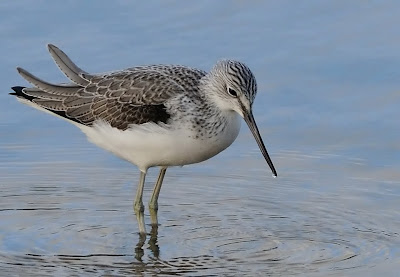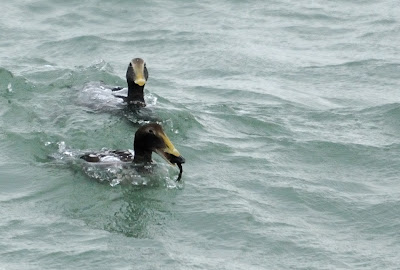These images are of two of the species we viewed on Thursday, it shows the difficulty in differentiating between female
Goosanders (
Mergus Merganser) and female Red Breasted Merganser (
Mergus Serrator) in their winter plumage. When I took these images the three of us thought what great comparison images they would make. The
Goosander is the outer bird with the Merganser the closest. The structure of the
Goosander is of a heavier build with a visible demarcation of the red head and neck colour, the bill is thicker and more hooked although not so prominent on this individual. The merganser is of less stature with a thinner neck and bill, and smaller head. The head colour red and similar to the
Goosander but has no demarcation with the neck colour and graduates to a a dirty brown to grey. These two individuals are probably first winter birds which further compounds the problem of identification as their adult plumage's have not been fully developed. I have to say I wobbled slightly when studying these images as the bills are very alike ,and the
Goosander lacks a white throat patch, but I feel that this is down to their age. Cornwall has enjoyed high numbers of
Sawbills this winter and noticeably, most are females.
Thanks to Steve Rogers and John Swann for the discussion and facts on identifying these species.



























































.jpg)













